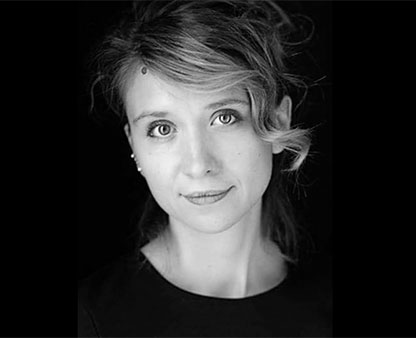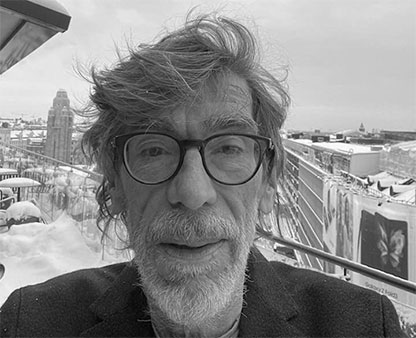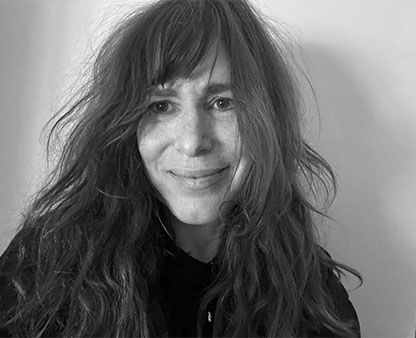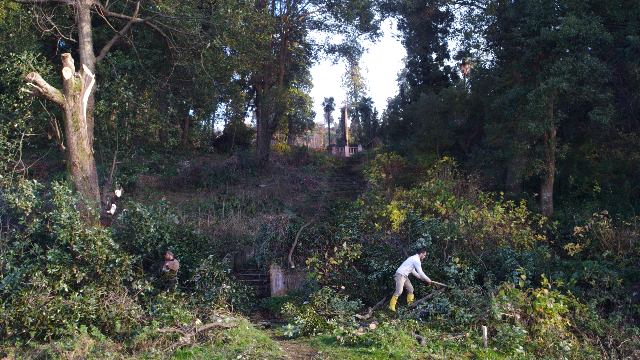Alle var dette mærkelige år, et århundredes sidste, efterhånden enige om, at Randers ikke mere var, hvad byen havde været. Sådan skrev jeg 2004 til Mette Lundens og min bog Randersbiografi. Og jeg selv begyndte dengang tilmed at spekulere på, om byen var en by stadigvæk. Med Calvino i hånden kunne jeg – i det mindste over for mig selv – rejse berettiget tvivl om den by, som i dag hedder Randers, nu også er den samme, som eksisterede tidligere under det navn. Som Calvinos Maurilio kunne den have afløst en anden med det samme navn på dette samme sted, uden der var forbindelse mellem dem. Uden der nogensinde havde været forbindelse.
MORGENMØDER
Og når Jyllands Posten en søndag tidligt i dette år 1999 kunne skrive ”God¬morgen Randers”, og så bare lade teksten handle om nogle møder, man havde tidligt på dagen mellem de øverste chefer i den kommunale administration, så vidste jeg, men accepterede ikke, at den ironiske hilsen også gjaldt mig. Jeg boede i Randers, holdt af at bo der, ville blive ved med det, men var altså i tvivl om, hvad det var for en realitet, ordet dækkede. Var jeg i en eller anden forstand omsluttet af begrebet Randers og således ansvarlig for, hvad disse mænd talte om og besluttede? Naturligvis ikke, skrev jeg til mig selv den morgen. ”Randers” var her en journalistisk forkortelse…
BYENS ANSIGT
Som ordet også var det hos Randers Amtsavis’ journalist Jørgen Bollerup Hansen, når han den 14. februar 1999 skrev om Randers’ image, interviewede borgmesteren om hans by, som var det stadigvæk denne overskuelige, middelalderlige købstad, de talte om, og i en spalte efter artiklen listede en række punkter op: Cerberus’ handlinger, det kommunale personalekontors handlinger, Lillebjørnbestyrelsens handlinger, Brusgårdbestyrelsens handlinger, Rytterskoleledelsens handlinger, Randers Jazzfonds handlinger, Jyllands Postens hanlinger med sine artikler om Randers Kommunes ledelse og endelig en bestemt handling på Randers Kunstmuseum. Ja, der var meget de dage at føle sig ansvarlig for. Alt dette skadede Randers’ image stod der. Strukturen Randers klart opfattet som et stort kommercielt firma bærende dette navn, hvor formanden for bestyrelsen netop var blevet interviewet.
FOTOBOG
Jeg havde næsten glemt disse møder om morgenen mellem de øverste chefer på Laksetorvet og fuldstædig fortrængt de meget voldsomme begivenheder under et ekstraordinært byrådsmøde den 10. marts 1999.
Men så kom forleden dag Mogens Brejnholm Nielsens smukke fotobog, Faktatjek, 48 fornemt tykke sider, liggende A3 format, en lille suite sort/hvide helsides fotografier i en uklippet montage direkte fra negativstriben og en større suite fotografier i farve og som alle er omhyggeligt kontrollerede snapshots.
Mogens Brejnholm Nielsen skriver i sit forord om sin holdning til sine fotografiers objekt Randers: “Jeg holder af min by, og har hjemve så snart jeg forlader den. Har i det meste af mit voksenliv fulgt med i samfunddsdebatten og via fotografiet kommet i kontakt med mange forskellige miljøer og mennesker. min yngste datter, der bor i Århus, har er indkøbsnet, hvorpå der der står: “Alt, hvad de siger om Randers, passer”…”
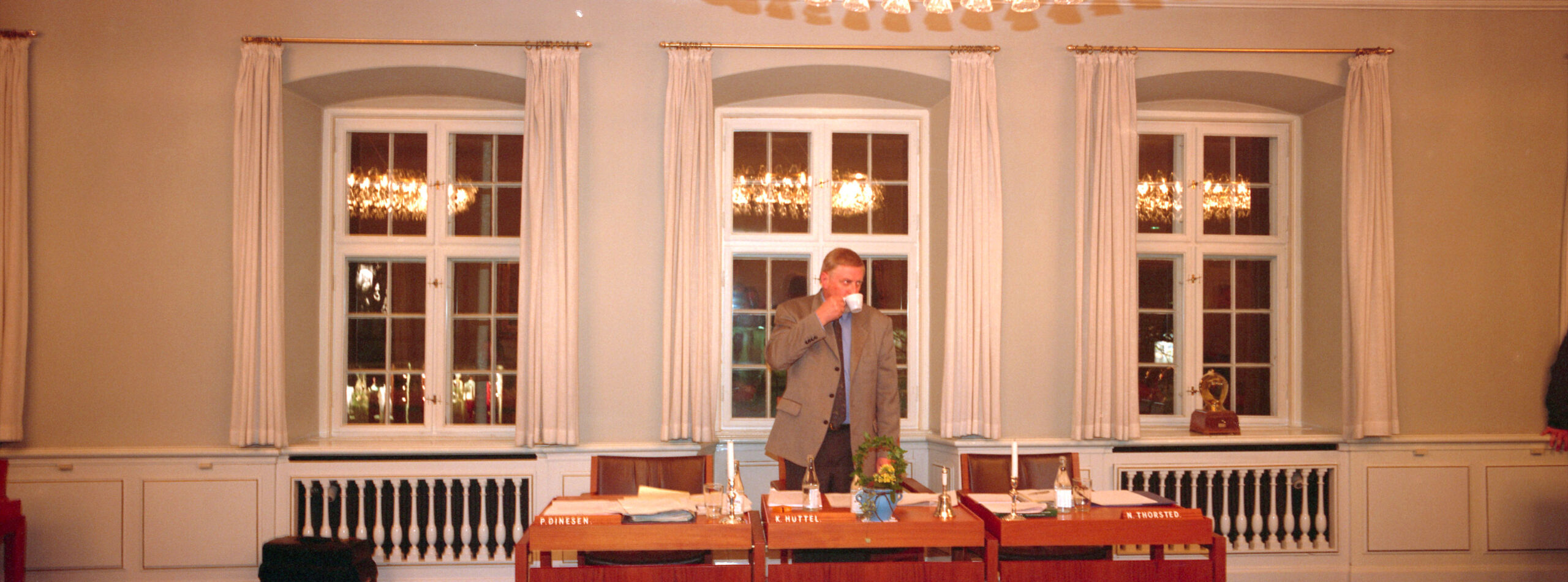
Alle optagelser i fotobogen er fra en begivenhedsrig aften på Randers Rådhus den 10. april 1999, og fotografierne skildrer et reelt drama med et ekstraordinært byrådsmøde, med formøder og mindre møder og korridorsamtaler undervejs. Dramaet var afslutning på en svært overskuelig og langsomt afdækket periode af dybe modsætninger i personalegrupper, embedsmandskreds og byråd.
FOTOGRAFIER
Mogens Brejnholm har optaget de sorthvide fotografier i nøgtern ærlig reportagestil, klassisk indiskutabel som billedjournalistik, hvad det ikke er. Det er pointefri redegørelser for det sete under en konstant tilstedeværelse.
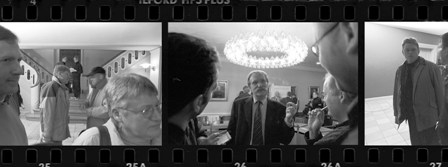
Finn Larsen har fotograferet i farver. Hans billedtæppe er i nervøs bevægelse som af en forårsvind fra et par åbne vinduer. Og det gør selvfølgelig min tillærte tydning af detaljer og enkeltfortællinger vanskelig, men flytter jeg min forventning fra det repeterende, fra det mimiske greb med kameraet ser jeg Finn Larsens poetiske vilje: se dette som flimrende teater, som en shakespearisk erfaring, ikke til at glemme.
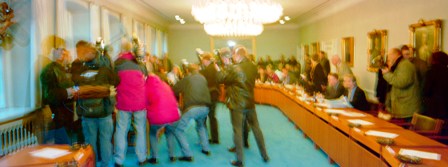
Det er således prosaisk fotografi og lyrisk fotografi i samme fotobog.
ESSAY
Billedsuiterne er omgivet af et stort essay hentet fra en journalistisk videnskabelig overvejelse af den løbende magtudredning disse år omkring århundredskiftet, Magtens Bog, 2002) hvor ”Randersskandalen” fik sit eget kapitel. Og om dette essay hed det i en anmeldelse:
”Var Farum-sagen kommet frem tidligere, ville den have en selvskrevet plads i fremstillingen. Nu må vi nøjes med Randers-sagen, som er beskrevet af Henrik Særmark-Thomsen. Bortset fra, at pengene er færre i personalesagerne i Randers, lader skandalerne om forvaltningen af personalesager ikke meget tilbage at ønske. De var ikke blot kendetegnet ved juridiske mangler og magtfuldkommenhed. Konsekvenserne af et uantastet socialdemokratisk styre gennem næsten 100 år var tillige, at oppositionen – med en enkelt undtagelse – ikke var mange kopper te værd, at Randers-afdelingen af Forbundet af Offentligt Ansatte var halvvejs i lommen på den arbejdsgiver, kommunen, som var dens modpart, og at en psykiater brød sin tavshedspligt, når kommunaldirektøren skulle have slibrigheder om en uønsket ansat. Artigt.” (Fra Informations anmeldelse omtale af “Magtens Bog”)
LITT.:
Erik Valeur: Magtens Bog, 2002
https://www.information.dk/2002/04/bogens-magt
Mette Lunden og Allan Berg Nielsen: Randersbiografi, 2005
https://randersbiografien.wordpress.com/randersbiografi-1-2/ (Scroll til 1999 / Billedet af byen)
FAKTATJEK
af Mogens Brejnholm Nielsen, 2021
Fotografier: Mogens Brejnholm Nielsen, 1999 og Finn Larsen, 1999
Essay: Henrik Særmark-Thomsen, 2002
Layout: Hans Grundsøe
Forlag: Mogens Brejnholt Nielsen
Salg: hosmbn5@gmail.com
ISBN nr. 978-87-982279-5-3
